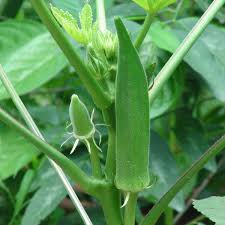In today’s blog, I’ll provide you a step-by-step guide on growing okra in South Africa. Yes, that is how okra is grown.
This information may be applicable to areas with climate conditions similar to South Africa. Keep your eyes concentrated on the page and read all the way through.
I was recently asked if farming okra was profitable in South Africa.
Yes, if recommended production standards are followed, okra can be a successful crop. After harvesting begins, it can return an income in 10 to 12 weeks.
Hibiscus esculentus is the botanical name for okra.
Always get certified seeds from a reputable seed company.
Climate-related needs/requirements for Growing Okra in South Africa
Okra can be grown anywhere in Ghana, although it thrives in warm, moist soils as a warm-season crop. Low-lying zones with an equitably distributed annual precipitation of up to 1000 mm and temperatures ranging from 25 to 350 degrees Celsius are often acceptable. The yield can resist extreme temperatures, such as those experienced during the dry season.
Read also: 5 Steps To Starting A Successful Farming Business In South Africa
Choosing a Location
It grows best in sandy to clay soils, but relatively light, depleted, rich soils are also good. It is recommended to use heavily manured loamy soils with a pH of 6.0-6.8 (acidic).
Arrangements for land
The ground should be cleared of trees, grasses, and root stumps, and the soil should be harrowed to a fine tilth. To increase the dirt surface and air circulation, apply 20 MT/ha of highly disintegrated fertilizer. Edges and creases should be separated by 60cm.
Propagation
Soak seeds in water for 24 hours or in ethyl liquor with CH3)2CO for 30 minutes. Sow 2-5 cm deep into a damp soil at a depth of 20-40 cm inside columns and 60-90 cm between lines. After germination, reduce each stand to one plant.
The seeding rate is normal.
3-5 kg/ha, depending on seed availability and selection.
Management of Nutrients
Test the soil to determine the amount of fruitfulness and adjust the rates to satisfy the yield’s supplement requirements.
Application of Fertilizer
If in doubt, plant with NPK 15-15-15 at a rate of 220 kg/ha. During flowering, add 110-150 kg of ammonium sulfate or 75 kg of urea per hectare.
system of water supply
For optimal development and productivity, adequate soil moisture is required. For the best returns, a standard water system timetable of 350 mm of water per hour is recommended.
Controlling weeds
Between column cultivators, keep the field weed-free by applying approved pre- and post-eminent herbicides, hoeing, or handpicking. Avoid causing damage to plant roots.
Control of Pests and Diseases
Aphids, Diamondback moth Whitefly, Bollworm, Jassids, Cotton stainer and bollworm, Leafroller, Mealybug, and Sting bug are common Okra pests.
Embrace IPM rehearsals to get control. Apply EPA-approved and/or Neem seeds separately (700g-1kg of very much dried neem seeds/15L of water rucksack). Follow the producers’ advice at all times.
Nematodes that cause root knots
Nematodes feed on young roots, causing them to shrink and producing large nerves on the roots, lowering organic product production. To control, use neem cake at a rate of 250 kg/ha and/or EPA-approved nematicides.
Significant diseases
Powdery mildew is characterized by a white dusty growth on the leaves that fades to an earthy tone. To keep weeds at bay, spray seedlings with sulfur-based fungicides and remove weeds.
Aphids and Whiteflies both send Leaf Curl and Mosaic.
Leaf curl: The leaves are small and cup-shaped, with distinct veins on the underside. Plants are hampered.
Mosaic: Leaves are typical in size and shape, but the shading is mottled green or yellow. Plants are hampered. Plant safe assortments to keep things under control. Before diseases spread, use EPA-approved bug sprays and insecticidal cleansers to control vectors. When working with seedlings or transporting cigarettes to the ranch, refrain from smoking or bringing cigarettes with you. Maverick out influenced plants as soon as possible. Practice crop pivoting with harvests that aren’t powerless.
Read also:How To Farm Okro In Kenya
Harvesting
5-6 days following flower opening, gather cases while they are still tender. Okra should be harvested twice a week. Picking regularly increases yield. In the cooler parts of the day, cut or snap units off the plant. The units should be kept in a cool place. To avoid injury, collected okra should be handled with caution. Within a few hours, wounded cases will turn dark or earthy in color. To avoid injury, okra harvesters should always wear cotton gloves when reaping and dealing with cases.
Reviewing
Sort, appraise, and pack in boxes or bushels by market needs.
Packaging
Okra is pressed in 6kg cartons for the fare markets.
Yields
Yields of okra are determined by the cultivar, harvest season, and reap frequency. A usual yield is 6-12 tons per hectare.



